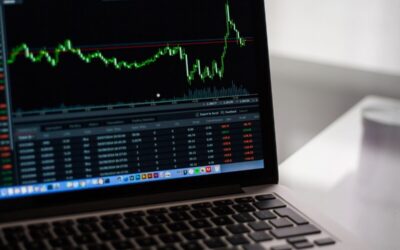“We believe the second half of 2023 offers opportunities for investors to get cash off the sidelines. There will be challenges, and a vertical bull market is hardly our view. But the opportunities on offer—near and longer term—point to a simple conclusion. It is time to engage more fully.”
Where we see the greatest potential investment opportunities for the rest of 2023:
• Time to engage more fully— “Many investors have understandably parked cash in money market funds yielding over 5%; we believe it is also opportune to move some holdings further out the US yield curve. The prospect of peak policy rates, further declines in US inflation and some slowing of growth are apt to push long-term yields lower over the second half of the year, boosting returns on safe, longer-duration fixed income holdings. As we point out below, taking duration risk also typically improves portfolio diversification.”
• Investment-grade credit— “The highest-quality areas of the credit market have become more attractive, providing higher yields in investment-grade bonds relative to the dividends from equities.”
• Generally high-quality, short duration— “When broadly looking at higher-quality credit, the default risk premiums are sufficiently attractive to compensate investors, even with some probable slowing of economic activity. Accordingly, within credit markets, we broadly prefer higher-quality, shorter-duration holdings.”
• Selected long-duration bonds— “The case for higher-quality, long-duration bonds has improved as a likely peak in interest rates arrives sooner rather than later. A decline in rates could provide more capital appreciation to the more interest-rate sensitive longer-duration Treasuries, as well as selected corporate bonds trading at discounts to par.”
• High-quality high yield— “However, high-yield bonds with stronger ratings profiles due to better fundamentals look to be a potential total return opportunity. Particularly when compared to equities, high-yield debt has a shorter duration profile than other parts of the fixed income market, while at the same time providing equity-like total return potential.”
• Emerging market debt— “Another opportunity, which we also noted at the beginning of this year, exists in emerging market local currency debt. Attractive yields (double-digit in some cases) coupled with US dollar weakness, offer an opportunity to enjoy equity-like returns, but without the degree of downgrade or default risk we see in US high-yield credit markets.”
• US equities— “Looking beneath the surface, bifurcated earnings streams may be creating new patterns of return dispersion. Share prices are responding to earnings outcomes in different ways across sectors and styles. The disparity in returns may increase as earnings variability could be a key factor behind finding “winners and losers.”
• Non-US equities— “Just as we noted at the end of last year, we believe it’s prudent to consider opening or establishing larger positions in non-US markets. We understand the reluctance. After a decade of massive US equity outperformance (since 2013, cumulative 20% versus Japan’s Nikkei, over 70% versus the German DAX, and nearly 150% versus the UK FTSE),4 US investors are rightfully sceptical of taking their portfolios overseas. But over the past six months, the Nikkei has doubled the S&P 500’s 7% return, and the German DAX has trumped it by three full percentage points. It is happening because of more attractive valuations and because of superior earnings upgrades, which we expect will continue.”
• Historic opportunity in private credit— “With rates still elevated relative to recent history, private credit will likely pick up a larger share of the loan market from regional banks. Given these dynamics, private credit managers will have the ability to more easily negotiate favourable pricing, terms and covenants.”
“The bottom line is that if a US recession occurs—which remains the overwhelming consensus view and hence is to some extent already accounted for in market prices—we believe it is likely to come later and be shallower than its predecessors. Nor is it inconceivable to imagine that the ongoing profits recession may end before an economic recession arrives—if it ever does.”
Yes, there are risks
“No outlook is complete without a candid appraisal of the risks. Stuff could happen. Some outcomes, however, can be at least partly diversified. Others, of course, could prove more challenging.”
• Deep recession: “Persistent inflation and concerted global central-bank tightening accompanied by fiscal restraint (as the debt ceiling compromise is implemented via spending cuts) could tip the US and global economies into recession, perhaps sooner and deeper than we anticipate. However, if investors have extended duration holdings (as we favour), gains on US Treasuries should at least partially offset probable losses in global equities and emerging local currency debt markets.”
• An escalation of geopolitical tensions: “Among the scenarios that could manifest is a disorderly retreat of Russian forces in the face of a successful Ukrainian counteroffensive. That outcome could provoke Russian President Vladimir Putin into a dangerous escalation of force—potentially including tactical nuclear weapons. Markets would shudder at the repercussions, even if duration fixed income might offer some refuge. Other hotspots, such as Taiwan and the South China Sea, have the potential to become flash points and sources of market risk.”
• A global disruption to energy supplies: “A sharp rise in energy costs could trigger more than just concerns about global growth. It could also renew anxiety about inflation and possible monetary policy responses. And for balanced portfolios, unexpected inflation is a non-diversifiable risk, as investors painfully learned in 2022.”
• Soggy returns: “If, against our expectations, profits growth remains anaemic, global growth slows, and inflation remains stubbornly above central bank target levels, then it’s possible that neither stocks nor bonds (nor emerging debt markets) will muster much in the way of returns. Volatility would probably remain elevated, making risk-adjusted returns even less desirable. That is a possibility over the next six months. But is unlikely to be a lasting phenomenon. This risk, put differently, could be the price for being early, rather than for being wrong.”




